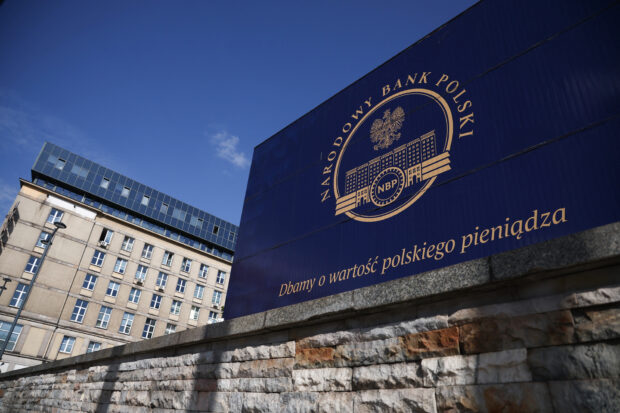
The logo of the Polish Central Bank (NBP) is seen on their building in Warsaw, Poland, Sept 25, 2023. REUTERS/Kacper Pempel
BUDAPEST – Central Europe’s central banks should maintain a tight monetary stance for a “considerable time” to ensure inflation is kept in check, and be ready to raise interest rates again if needed, a senior IMF official said.
With inflation on the European Union’s eastern flank declining from double digits, some central banks there have been easing policy, pressuring their currencies as rate differentials with the euro zone narrow and markets price in the prospect of higher U.S. rates for longer.
Hungary has cut rates by a combined 500 basis points since May, though its 13 percent base rate is still the highest in the EU, and Poland – which holds a parliamentary election on Sunday – by 100 bps.
Data released on Tuesday showing Czech inflation easing to its lowest since end-2021 has cut the odds on the central bank there lowering borrowing costs from a more than two-decade-high soon.
International Monetary Fund forecasts released on Tuesday project average 2024 inflation at 6.4 percent in central Europe’s biggest economy Poland and at 6.6 percent in Hungary.
“Our policy advice to the region, but it’s really to Europe as a whole, is that monetary policy needs to remain restrictive,” IMF European Director Alfred Kammer told Reuters.
Inflation targets
He said most central European countries were unlikely to reach their inflation targets before 2025, meaning price growth will have exceeded policy targets for several years.
“What that means right now is that the restrictive monetary policy stance needs to be maintained for a considerable time,” Kammer said in an interview embargoed until Friday but given before Poland cut rates by 25 bps last week.
“If one needs to err, keep tighter for longer because the biggest mistake one can make is that you ease and then you need to go into another tightening cycle,” he said in remarks referring to the region as a whole.
Continued big wage rises amid tight labor market conditions posed risks to inflation, and “a big opening … (for) massive rate cuts” was unlikely anytime soon, he said.
The Polish minimum wage, the region’s highest, is set to rise by nearly a fifth next year. Romania’s government hiked the minimum wage by 10 percent from October, while Hungary has flagged a possible 10-15 percent increase from the start of next year.
Kammer said a key issue to monitor would be the persistence of core inflation, driven in part by wage rises, as well as possible commodity price shocks.
“In some cases, we may be disappointed about incoming data, that inflation is indicating that rates may have to be higher for longer,” Kammer said.
At that point, central banks should be ready to take action, “including …increasing policy rates again.”
Kammer said fiscal policy should work in tandem with monetary policy, and governments should ensure that any energy price schemes or cost of living packages were properly targeted to ensure they did not provide unnecessary fiscal stimulus.